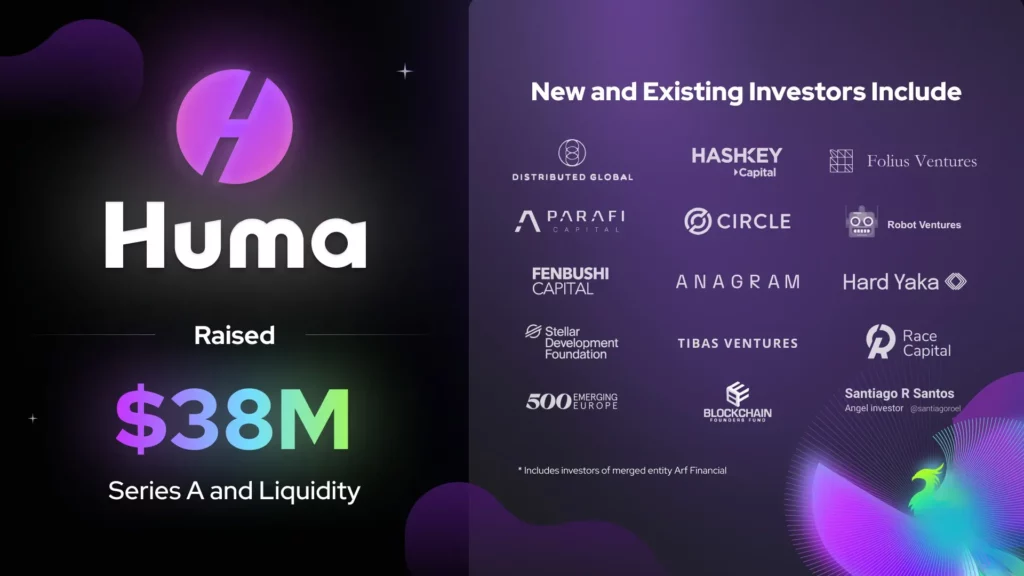
The news of Huma Finance raising $38 million has attracted significant attention. In a market that’s increasingly sluggish and lacking fresh narratives, Huma’s focus on the new PayFi concept has certainly sparked interest.
Let’s break down three key points:
- Why is PayFi Emerging as a Hot Topic?
- Examining Huma’s Lending+RWA+PayFi Business Logic
- What Is the Potential Growth of the PayFi Space?
Here are my thoughts:
1. Why is PayFi a New Focal Point?
PayFi is a concept introduced by the Solana Foundation. At its core, it applies Web3 technologies (programmable money and token economics) to the real-world economy, aiming to expand on-chain financial innovations (DeFi) to broader economic systems.
- On one hand, it further promotes the financialization of real-world assets (RWA), exploring ideas like “zero net cost shopping,” accounts receivable financing, cross-border payments, the creator economy, and supply chain finance.
- On the other hand, as DeFi’s current yield opportunities often rely on over-leveraged strategies, PayFi introduces new sources of yield by bridging Web3 innovations with Web2’s traditional economy, such as through AVS security commoditization and DA capabilities.
Additionally, as crypto markets face regulatory challenges, PayFi represents a hybrid economic model that aligns Web3 innovations with traditional finance’s regulatory framework. This makes it a strong contender for future growth, serving as a bridge between Web3 and Web2 economies.
2. Analyzing Huma’s Business Logic: Lending+RWA+PayFi
Why has Huma Finance emerged as a leader in the PayFi space? Let me summarize a few key points:
- Huma was founded by a Silicon Valley team with extensive experience in Web2 fintech. Initially focused on decentralized lending, Huma offers products like income-based loans and revolving credit lines, integrating lending and RWA into its business.
- The acquisition of payment application Arf Financial enabled Huma to upgrade its business. Arf’s regulatory compliance and cross-border payment services helped position PayFi as Huma’s ultimate financial service goal.
Let’s highlight three aspects of Huma’s complex product and business model:
- Product Line Optimization: HumaV1 offers common credit products like revolving loans and accounts receivable financing, while HumaV2 introduces secured credit lines for receivables, attracting institutional investors. These enhancements cater to a wider range of businesses, offering more flexibility for companies with steady future income streams. This seemingly small upgrade has significantly increased Huma’s appeal to institutional investors by providing scalable, stable, and risk-controlled returns.
- PayFi Stack Modular Architecture: Huma built an open, modular architecture based on PayFi, which includes a trading layer (Solana, Stellar), a currency layer (USDC, PYUSD), a custody layer (Fireblocks, Cobo), a compliance layer (Chainalysis, Elliptic), a financing layer (Huma), and an application layer (Arf, Raincard). This comprehensive PayFi stack lowers the barriers for companies to enter the PayFi market, akin to Ethereum’s Layer 2 OP Stack or Solana’s SOON initiative, creating a standardized framework for PayFi innovation and business model evolution.
- Stable Real-World APY Returns: Unlike many DeFi projects that rely on token-based economic models to sustain yields, Huma’s protocol taps into real-world financial products. Through its Arf platform, Huma provides liquidity solutions for the $4 trillion global cross-border payment market. This generates steady returns of 10%-20% for different investor levels (Senior or Junior), surpassing the typical token incentive model.
With a focus on meeting real-world financing needs, Huma’s approach offers a more sustainable yield compared to projects like Ondo Finance, which relies on T-Bills. As the Federal Reserve lowers interest rates, Huma’s ability to tap into real-world financial demand positions it for long-term success.
3. PayFi’s Future Growth Potential
PayFi is poised to become a key narrative in the market, especially as it offers a stable yield alternative to pure DeFi. Its potential applications extend beyond cross-border payments to trade finance, supply chain financing, small business loans, consumer credit, and international tuition payments, providing significant room for expansion.
However, PayFi is still in its early stages. There are challenges related to product line expansion and regulatory uncertainty, but the space is worth watching as it evolves and matures.
Conclusion
PayFi is emerging as a bright spot in the market narrative, offering the potential to create new business models and value in both the Web3 and traditional financial worlds.